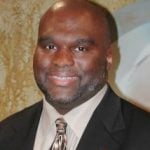
Deacon Harold Burke-Sivers discusses the merits of both conversational prayers and “rote” prayers, and recommends his book “Ignite,” co-written with Sonja Corbitt, as a good exercise in the former.
Transcript:
Host: We’ll go now to Michelle in Augusta, Georgia listening on St. Paul radio. Michelle, you’re on with Deacon Harold.
Caller: Yes, hi, thanks for taking my call. I just wanted to comment, recently during Lent at our parish we’re doing small groups and we’re studying prayer for like a six week period, and so one of the things that we are learning is that you need to approach prayer as a conversation, but that first, you know, God needs to speak to us and then we listen and respond, you know, and then have our meditation, I guess it’s under the Lectio thing. But it just really opened our eyes to why, you know, sometimes, you know, we go to prayer and we just sit there, and nothing happens, and it’s because, like the presenter was saying, we’re doing all the talking. You know, we aren’t sitting there to listen and so what he’s suggesting is that we need to use Scripture as, that’s like how God speaks to us, and then we reflect on it and then we pray back. But anyway, so it’s a group of like six women, and so we’re sitting there thinking this is amazing, why haven’t, you know, I means since little girls we learned how to pray the Rosary, Our Father, whatever, but you know we’re in our 40s and we’re just learning this.
Dn. Harold: Yeah, I hear ya.
Caller: We’re trying to figure out, why didn’t we hear this so long ago?
Dn. Harold: Yeah, I think that’s a great question, Michelle, I think part of the reason is that our–we talked about rote prayers, just like I mentioned earlier, my mom teaching me the rote prayers as well. But conversational prayer is something that’s personal, you know, like if I have a conversation with my wife about something important in our marriage, that’s personal. That’s between me and her. And so I don’t think the Catholic Church wants to script peoples’ personal conversations with God. I mean, you know, so you’re free to be able to have that conversation in the way that you want to speak to God, you know, that moves you. So that may look different for me, Michelle, than it may look for you, than it may look for Cy, or it may look for, you know, for Tim Staples or whoever, you know.
So I think the rote prayers–because Jesus, I mean, the Our Father. Jesus said, “Pray this prayer,” so that’s what’s really important. The Hail Mary, moving closer to her and we’re able to see our Lord Jesus Christ through the heart of the Blessed Mother. You know, “Glory be to the Father,” the Trinity, one God, three persons, you know, beautiful. But I think as I said earlier it’s both/and, not either/or when it comes to, when it comes to prayer. And by the way, you familiar with Sonja Corbitt, Michelle?
Caller: I’m not, no.
Dn. Harold: No, okay, well I co-wrote a book with her that’s coming out later this summer called “Ignite,” which is a Bible study, but our approach is much more personal, so this book is gonna really address what you’re talking about, Michele. Hopefully I can come on the show later this year and talk about that book when it comes out, but our approach is using the Scriptures to have more deeper intimacy with the Lord. Not just exegesis, like what this word means and that word means, but seeing yourself, your life, your relationship with God personally in the pages of God’s Word. So we show people how to do that in this book.


